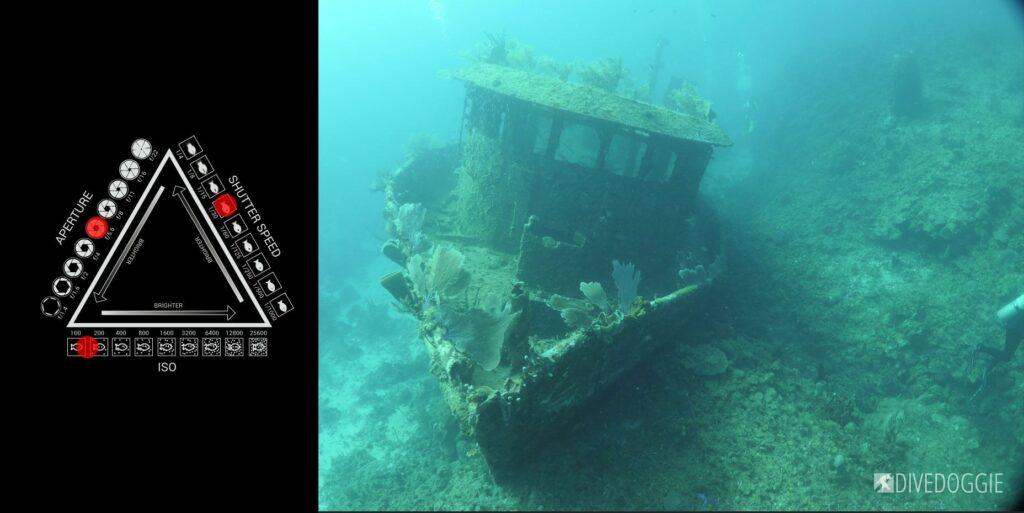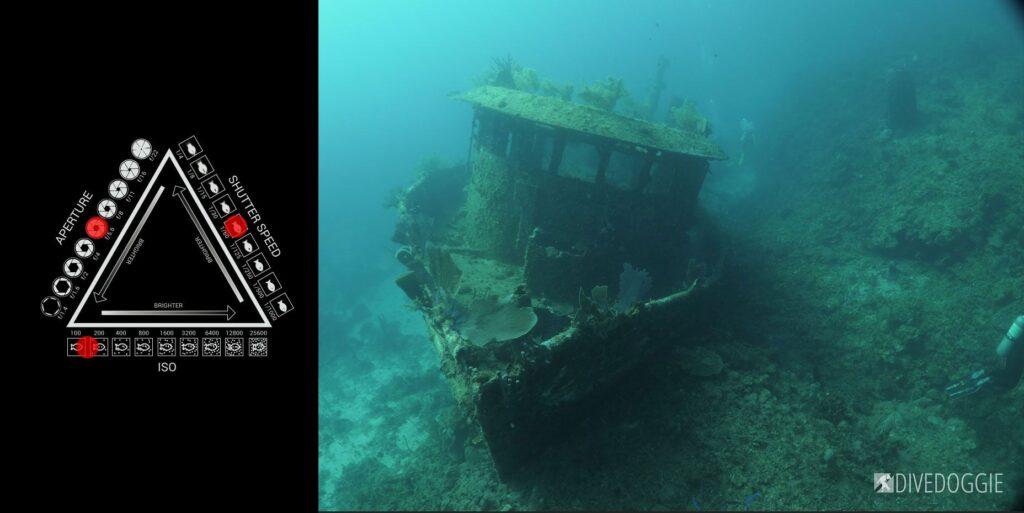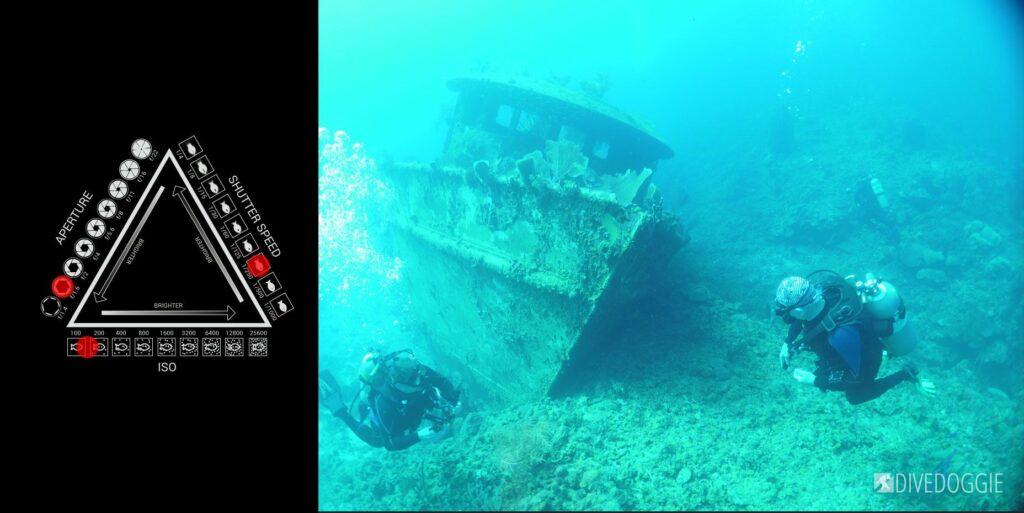F-stops, shutter speeds, and ISO settings have confused many a photographer at one point in their lives. Those beginning with film and then moving to digital may have an even more difficult time wrapping their head around the differences in ISO alone. Add in complications such as sensor size, instant feedback with built-in histograms, and now we have a different palette to start on a new blank canvas.
Now take that information into a completely different environment with color loss, reflection and refraction: Water.
ISO, Aperture and Shutter Speed
These are the three magical components of great photography: iso, shutter speed and aperture. These items make up the exposure triangle for both land and underwater photography. Therein, likes the magic!
ISO

ISO refers to the International Organization Standard, as many are familiar with in other aspects of standards. Photography started with light-sensitive film and standards developed with those, ASA and DIN. Circa mid-1970’s, ASA and DIN film standards combined into one since referred to as simply, ISO. This standard remained in film sensitivity and later the term was adopted into digital, trying to match the same brightness standards as the film standard.
Shutter Speed

Shutter speed is fairly explicit in it’s title – it refers to the speed in which the shutter operates. A slower shutter speed allows more time for light to hit the sensor, allowing for information in the photo. This results in both a brighter picture and potentially more blur. Conversely, a faster shutter speed allows less time for light to hit the sensor, allowing for a darker picture and potentially less blur.
Aperture

The amount of light brought into the lens is controlled by Aperture – the size of the opening of the lens diaphragm. Aperture is measured in f/stops such as 1.4 (largest opening) to 22 (smallest opening). The brighter the photo, the larger the aperture (smaller number) and the darker the photo, the smaller the aperture (larger number). Aperture also controls depth of field.
Putting it Together

The beauty and art of photography lies in the balance of finding the right aperture, shutter speed and ISO. For underwater, consider starting with middle-of-the-road settings such as f/5.6 or f/8, a shutter speed somewhere around 1/60-1/125 and ISO around 125.
Adding strobes, lights, changing conditions such as sunlight, depth and turbidity will required you to adjust your settings accordingly. And therein lies the art and challenge of underwater photography.
What Does the Exposure Triangle Look Like Underwater?
First, we’ll start with a subject that is constant. Lighting may change slightly, but at ~50+ feet, we already know we’re losing yellows, and red and orange are gone from our spectrum. We are then left with greens and blues, but we can balance them using the exposure triangle. These photographs have had no post production for color management, they are simply managed with the exposure triangle:






Magic and Art
Photography presents a challenge. Scuba diving presents a challenge. Putting both together is an exponential challenge and yet, an incredibly beautiful experience. Time, patience and a hobby that lasts a lifetime come from the art and magic of light, water and you. What will you create?
Go diving.

